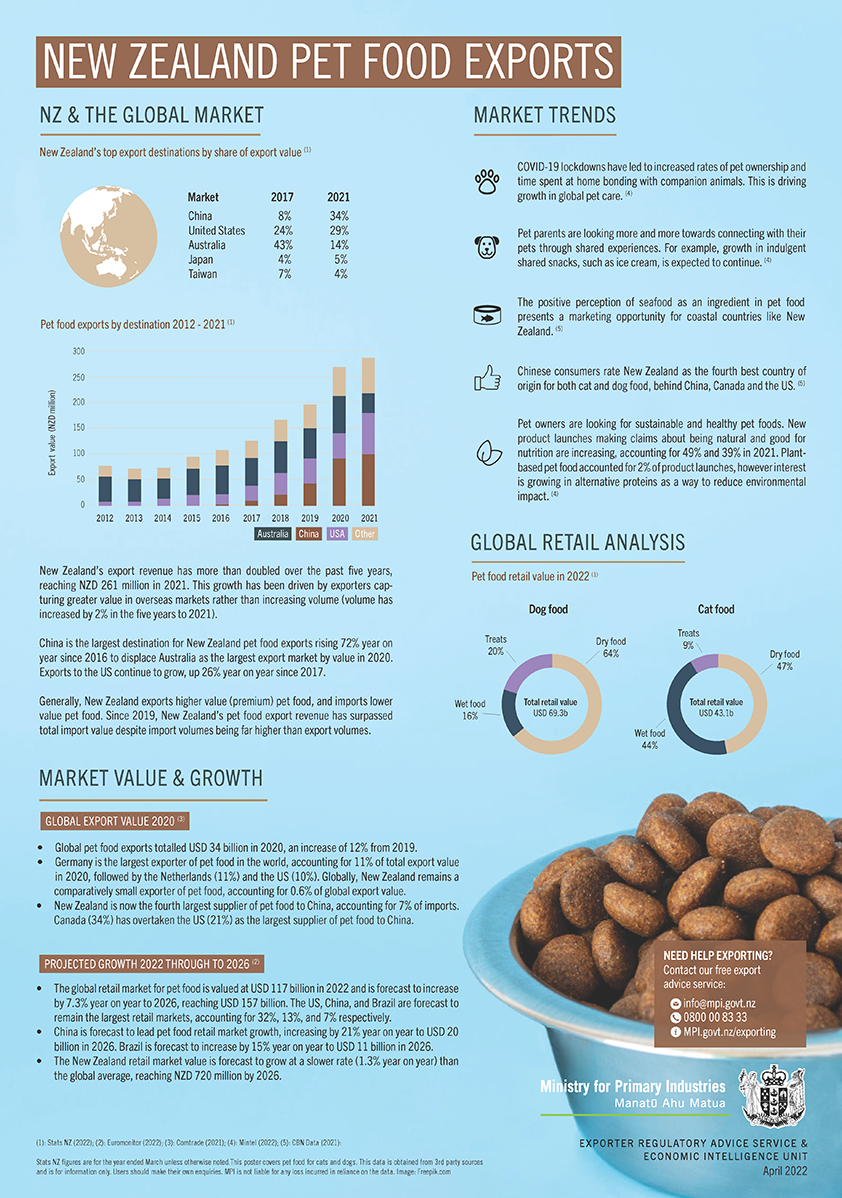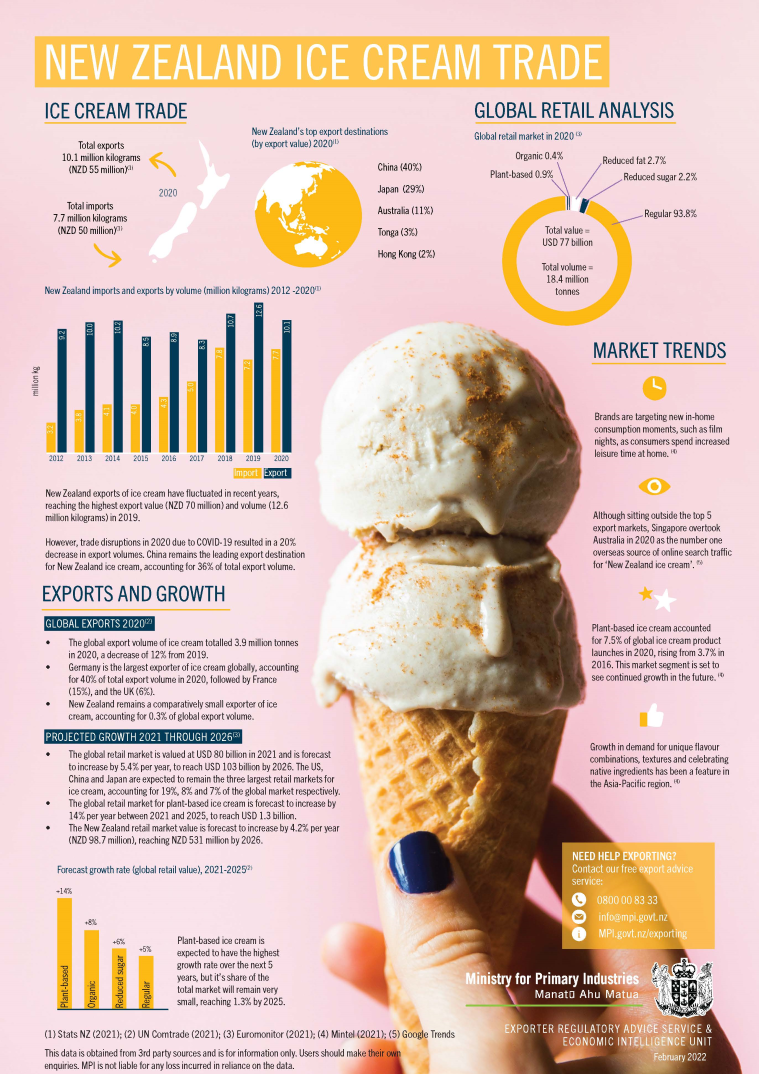Honey and bee products export data

- In 2022, the global honey market was valued at USD $8.5 billion. It is predicted to be worth USD $12.7 billion by 2029.
- The New Zealand European Union Free Trade agreement removes a 17.3% import tariff on mānuka honey. The tariff has been worth $40 million over the last 5 years.
- Mānuka has become popular in the cosmetics industry over the last 10 years. Its use has increased due to its potential benefits for the skin and its natural properties.
- New Zealand is the largest exporter of honey to China, accounting for 80% of imports.
- The percentage of online sales to US consumers has jumped from 3% in 2019 to 18% in 2023.
NZ honey exports: fact sheet [PDF, 845 KB]
Pet food export stats

- Pet parents are connecting with their pets through more shared experiences. For example, growth in indulgent shared snacks, such as ice cream, is expected to continue.
- In 2022 the global retail market for pet food is valued at US$117 billion. It’s forecast to increase 7.3% year-on-year, reaching US$157 billion by 2026.
- The New Zealand retail market value is forecast to grow at a slower rate (1.3% year-on-year) than the global average, reaching NZ$720 million by 2026.
- China is the largest destination for New Zealand pet food exports, rising 72% year-on-year since 2016 to displace Australia as the largest export market by value in 2020.
- The positive perception of seafood as an ingredient in pet food presents a marketing opportunity for coastal countries like New Zealand.
Pet food export stats: fact sheet [PDF, 207 KB]
Ice cream import and export trade data

- New Zealand exports of ice cream have fluctuated in recent years, reaching the highest export value (NZ$70 million) and volume (12.6 million kilograms) in 2019.
- China, Japan, Australia, Tonga, and Hong Kong are the key export markets for New Zealand ice cream.
- The New Zealand retail market value is forecast to increase by 4.2% (NZ$98.7 million), reaching NZ$531 million by 2026.
- Plant-based ice cream accounted for 7.5% of global ice cream product launches in 2020, rising from 3.7% in 2016. This market segment is set to see continued growth in the future.
NZ ice cream trade: fact sheet [PDF, 867 KB]






